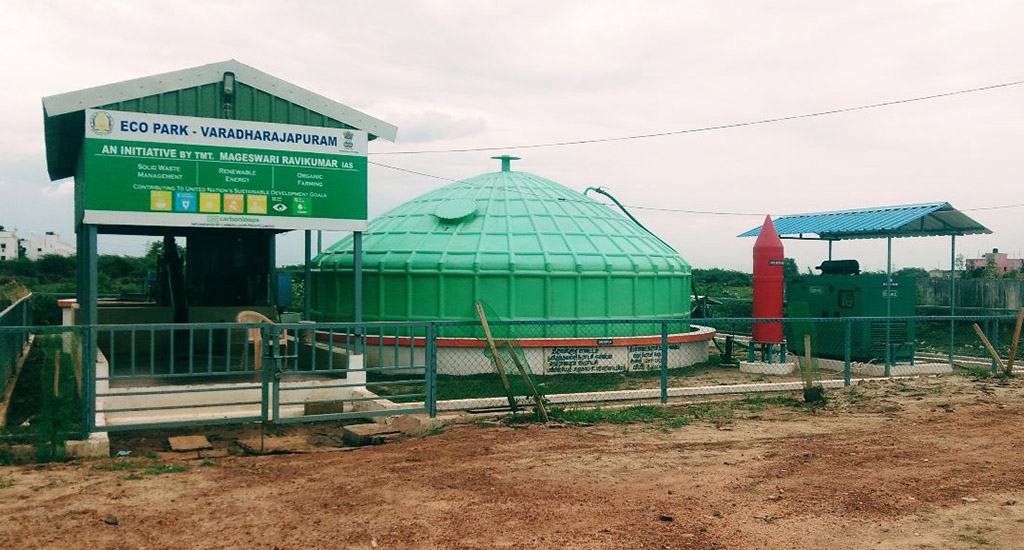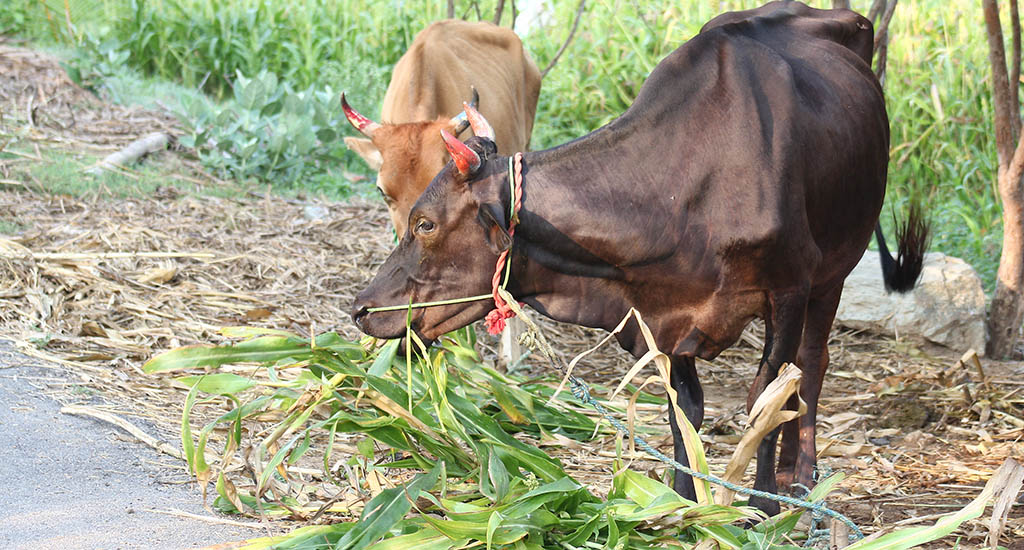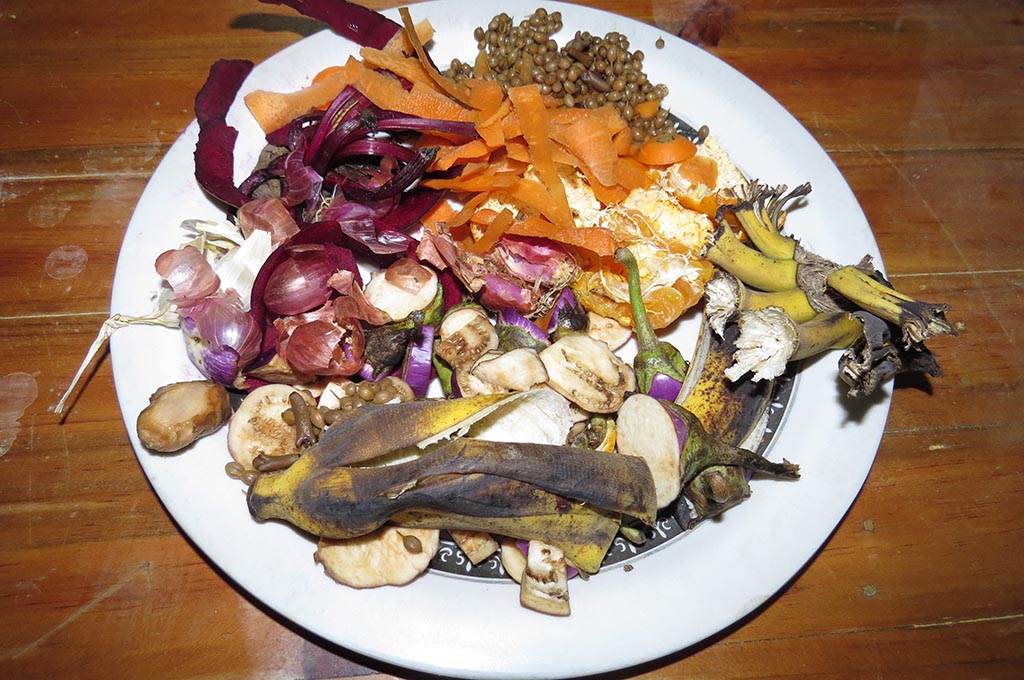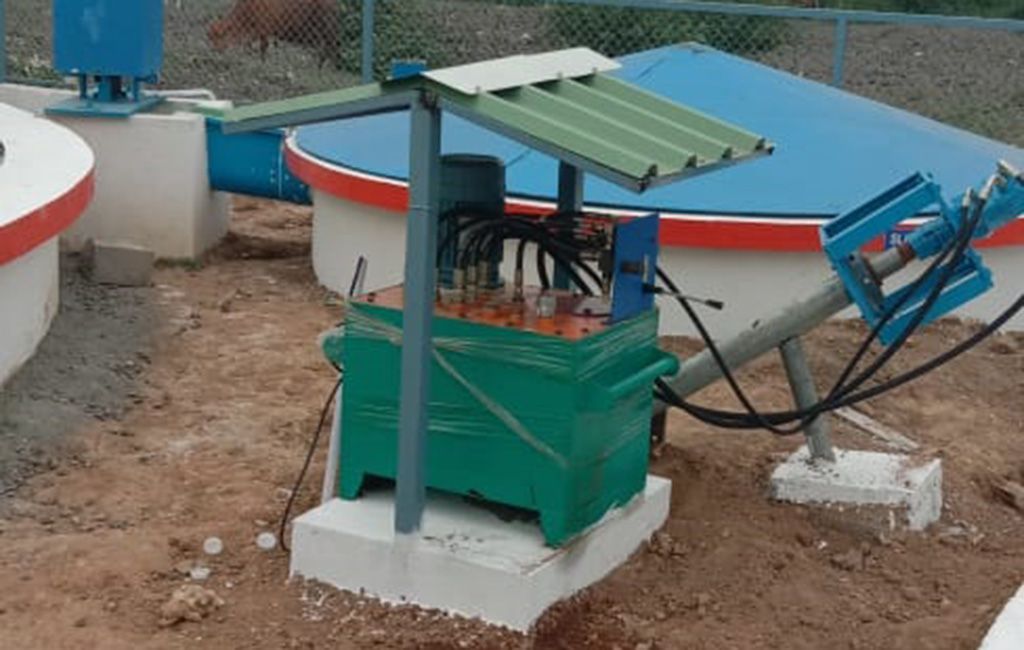
Where waste ‘lights up’ villages
While waste disposal is a huge problem – moved from neighbourhoods to dump yards – villages in Tamil Nadu are turning their wet waste into biogas to generate electricity.

While waste disposal is a huge problem – moved from neighbourhoods to dump yards – villages in Tamil Nadu are turning their wet waste into biogas to generate electricity.
Out of sight, out of mind. NIMBY (not in my backyard) in fact. That’s the attitude most of us have towards the waste we generate.
But some villages are taking a conscious decision to not only manage their waste better, getting cleaner streets in the process, but finding multiple uses for it.
Like powering the street lights for one.
“Cow dung is what powers the 140-odd street lights in our village,” said S Balakrishnan, a dairy farmer of Varadharajapuram village in Tamil Nadu’s Tiruvallur district.

In a distant Kanjirangal village of Sivaganga district it’s wet waste from eateries, markets and households that powers the street lights.
Also Read | Rural community at receiving end of temple town’s sewage
It is quite common to produce gas from bio-waste. But electricity?
“Wet waste can be composted and used as fertiliser or it can be used to produce biogas. The biogas can be used for cooking or to produce electricity,” explained Madhusudhan Reddy, the district collector of Sivaganga.
The pressure in these plants is not sufficient for cooking and bottling gas is expensive. “So we opted for lighting,” Reddy adds.
The plant in Kanjirangal is away from the residential area.
“So the electricity from the plant powers some common facilities and a stretch of the highway nearby,” M Alwin, operations manager at Carbon Loops Private Limited, the company that installed and operates the Kanjirangal plant, told Village Square.
But how did the idea for biogas plants come about?
Varadharajapuram has a considerable number of dairy farmers.
“With about 800 cattle, the waste generated is about two tonnes per day,” said Alwin, whose company installed the plant in Varadharajapuram too.
As most of the farmlands around the village have become real estate projects, the cattle waste could not be used as manure. There was no other disposal method.
Villagers remember cow dung dotting the streets, making it difficult for them to walk.

While some of the cattle roamed the roads leaving a mess, the milch cows were confined to the sheds or tethered near the houses.
Also Read | A peek into rural India’s plastic waste
“For decades people had been washing down the cattle waste from the shed into the channels, which flowed into the Mannankuttai pond nearby,” said V Kalaiyarasu, the Varadharajapuram panchayat president.
It had seeped so much that the groundwater pumped by some of the houses near the pond used to be discoloured.
“When this dirty water from the pond overflowed into the nearby government school during rains, posing a health risk, the then district collector Mageswari Ravikumar suggested the biogas plant as an alternative,” said Kalaiyarasu.
As for Kanjirangal, Madhusudhan Reddy, who had done similar biogas plants in Chennai, decided to replicate them.
“Currently the biggest challenge in our villages, towns and cities is management of solid and liquid waste. About 50% of the waste is compostable. But generally everything is put in dump yards. Instead it can be used to produce useful energy,” he told Village Square.
The biogas plants in Varadharajapuram and Kanjirangal have a 2-tonne capacity – fed by cow dung and wet waste respectively.
“An e-car collects kitchen and food waste from houses and eateries and other biodegradable waste from weekly vegetable markets from nearby panchayats and Sivaganga,” said KSM Manimuthu, president of Kanjirangal panchayat.
The collected bio-waste fed into a digester, along with water, produces biogas in the absence of oxygen. This biogas is used as fuel to generate electricity.

The electricity is also used to run the plant, besides powering the street lights and e-car.
But getting energy out of waste is not the only benefit. The roads in Varadharajapuram are clean now.
“We collect the dung in drums. Workers take the drums every morning,” said Balakrishnan.
Now that the villagers don’t wash the waste down the channel, the panchayat has cleared the muck and cleaned the pond.
Overall the village has become clean and there is no water stagnation in the school when it rains.
Some in the village are apprehensive though, as the generator is not working at the moment. But according to the panchayat president, they will repair the generator soon and the streets will remain clean.
In Kanjirangal, Manimuthu is happy that the market places and villages are clean. And so are the villagers.
But there is more.
“The slurry that you get from the plant is rich in nutrients and distributed to farmers (as fertiliser) free of cost,” said Reddy. “There will be solid manure also, but very less in quantity. So that’s used in the kitchen garden on the premises.”
Also Read | Community involvement improves waste management
Farmers dilute the slurry and use it as liquid fertiliser, easily applied by mixing with the irrigation water.
According to Elumalai, a farmer, using such liquid fertiliser free of impurities is more effective than applying manure directly as hardly any weeds grow.

“This slurry can turn infertile soil into fertile, normal soil in six months,” said M Winston, managing partner at BRITT Envirotech, a company providing organic waste management solutions.
The Kanjirangal plant costing Rs 66 lakh was funded by the National Rurban Mission (NRuM).
In Varadharajapuram, with a monthly operational cost of nearly Rs 50,000 borne by the panchayat, the net saving in their electricity bill has been more than Rs 40,000.
“This is a clean way of processing solid waste. Since there’s no smell, people have less objection to having it in their neighbourhood,” said Reddy.
The biggest advantage is the amount of waste avoided from reaching the landfills.
From June 2021 till the first week of December this year, 358 tonnes of solid waste have been processed in Kanjirangal. With about 50% of landfill gases being methane, more than 4,000 m3 of the greenhouse gas has been prevented from entering the atmosphere.
And as Manimuthu proudly said, “We produce much needed electricity with raw material that costs nothing.”
This story has been produced as part of Earth Journalism Network’s Renewable Energy Story Grant 2022.
The lead image shows how electricity produced in biogas plants can power common facilities (Photo courtesy Lachlan Ross, Pexels)
Jency Samuel is a civil engineer and an independent journalist based in Chennai.